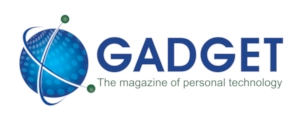Artificial Intelligence
The rise of AI with
a team spirit
Google unveiled an Agent Development Kit at the Cloud Next 2025 conference in Las Vegas last week, writes ARTHUR GOLDSTUCK.
Imagine giving your AI a job – and it hires a few more AIs to help, splits up the work, reviews their outputs, and hands you the polished result. That is the promise of AI agents, much touted by tech companies since the middle of last year.
Rather than being extensions of large language models like Google Gemini and ChatGPT, agents are independent software processes with goals, memory, and responsibilities. Not only are they capable of working on tasks over time, but they can also operate alongside other agents.
At the Google Cloud Next 2025 conference in Las Vegas this week, Google introduced a toolset designed to bring this model of collaboration into the mainstream. The Agent Development Kit (ADK) gives developers the means to create systems made up of multiple specialised agents, each able to reason, act, and coordinate with others.
“People want choices,” said Saurabh Tiwary, vice-president and general manager of Cloud AI at Google, speaking to Gadget during the conference. “They want to be able to build with different models, run on different platforms, and still get the best results.
“We believe that if people use Gemini, they will get the most capable agents, but we are making the ADK open source, and completely decoupled. People don’t even have to run it on Google Cloud.”
Google also announced an Agent-to-Agent Protocol, which allows agents built in other systems, such as LangChain or HuggingFace, to communicate with those built using the ADK.
The Agent-to-Agent Protocol acts like a universal translator between different types of agents. If an organisation has already built their agents using other tools, they can use Google’s latest systems without starting over.
Google is also focused on how agents can work together to improve the quality of their output. In this model, the power of AI comes not from one agent doing everything, but from groups of agents working together, evaluating each other’s ideas, and building on them.
One of the most ambitious examples is a system called Co-Scientist, developed with Harvard Medical School and Stanford Medicine. It was created to support researchers working on treatments for diseases such as Alzheimer’s.
“It populates thousands of agents under the hood,” said Tiwary. “Each one takes a problem statement – say, designing a drug for Alzheimer’s – and tries to come up with a possible solution.”
The ideas that emerge are evaluated by other agents, which act like judges. They assess how practical or scientifically sound each proposal is. Ideas that make the cut move on to the next round.
Google used a rating method similar to the one used in chess to measure how effective the process was. A standalone AI model working on its own might produce ideas that earn a score around 1000 or 1100. Co-Scientist achieved scores as high as 1800.
“Some of those outputs are already being considered for trials,” said Tiwary.
The same approach is being used in more familiar settings. After moving house recently, Tiwary came across an early user who had applied the technology to streamline the process.
“The person turned on the camera, walked through the house, opened drawers, and let the model generate the list. They found items they didn’t even realise they had.”
He sees particular value in using agents to help people in emerging markets.
“Think about voice conversations. People may not have reading skills, but they converse. With Gemini’s multimodal capabilities, you can have a full end-to-end conversation with the system. You can point your camera at something and say, ‘Tell me what this is, and what I should do,’ That opens up access in a big way.”
Much of Google’s work in this area has taken place quietly, without fanfare. But Tiwary said the pace inside the company has picked up dramatically.
“We’re shortening the loop. When DeepMind releases something new, it reaches external developers in a matter of days. And when customers use it and give feedback – not their data, but their experience – we send that back into model development.
“You’ll see more and more tools like this. The key thing is that this is about building a system where many agents can coordinate – and where the intelligence comes from the interaction.”
* Arthur Goldstuck is CEO of World Wide Worx and editor-in-chief of Gadget.co.za. Follow him on Bluesky on @art2gee.bsky.social.




















